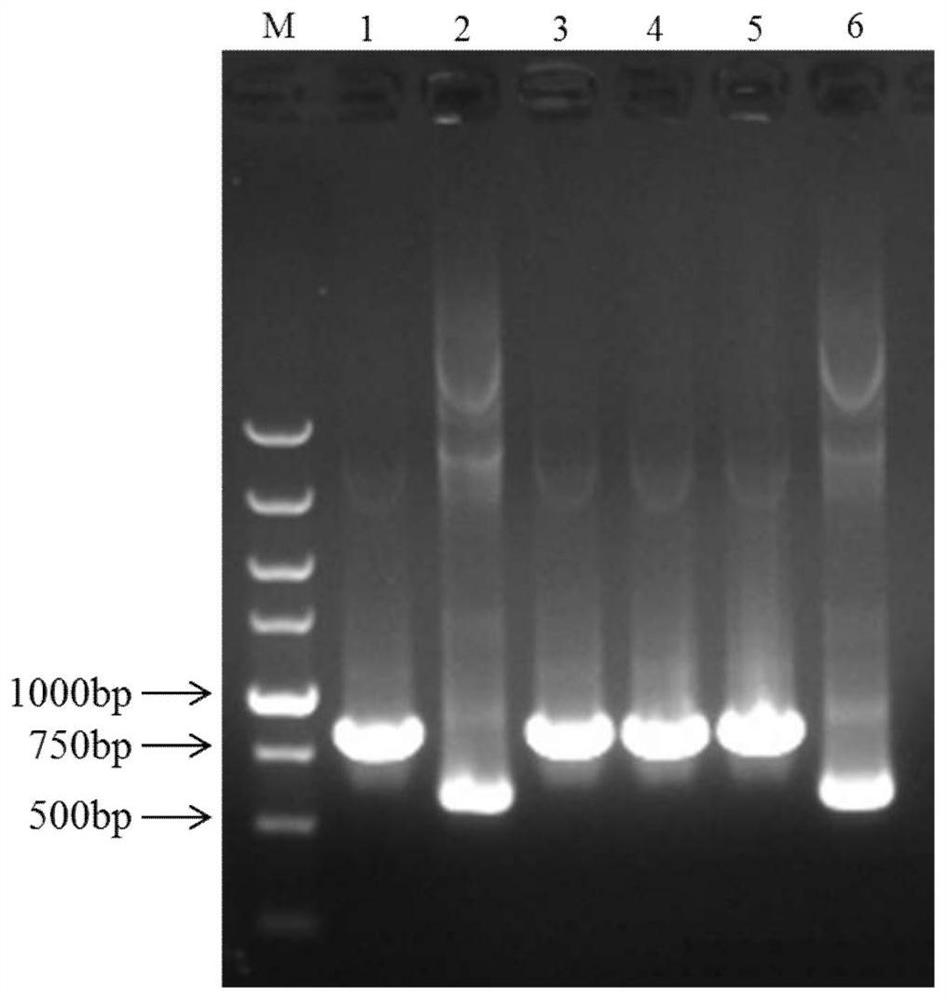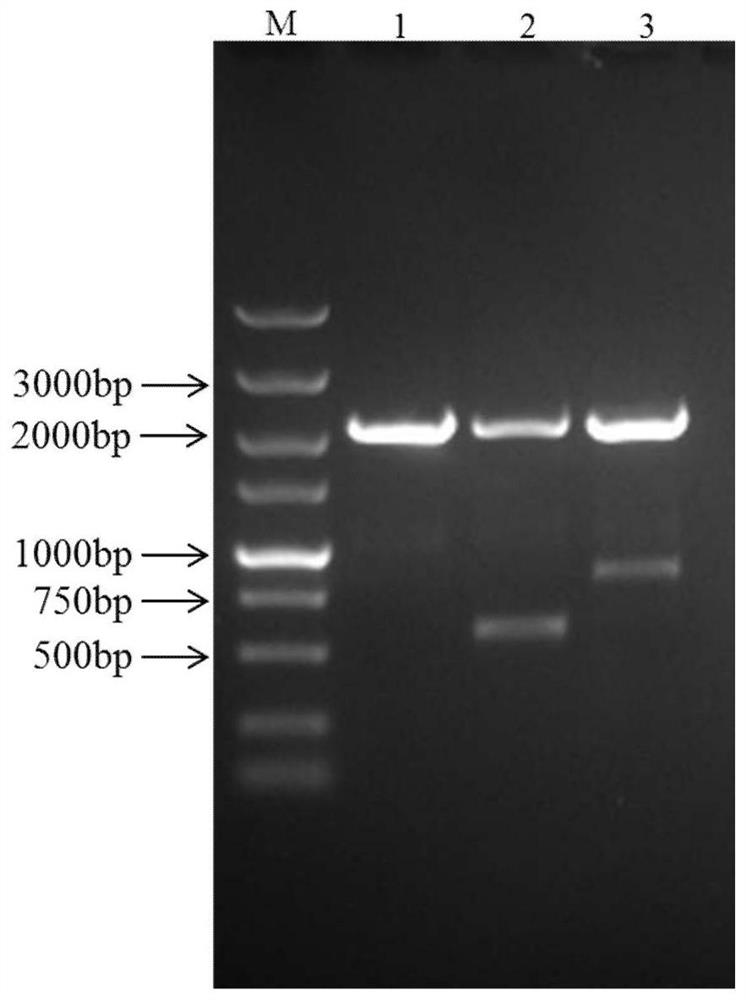Preparation gs115/ace-amp1 for inhibiting postharvest blue mold in pear fruit
A GS115, ace-amp1 technology, applied in virus/phage, microorganism-based methods, applications, etc., can solve the problem that the biological control effect of antagonistic microorganisms cannot be reached or approached, and achieves inhibition of penicillium, reduction of rot, and prolonged preservation. period effect
- Summary
- Abstract
- Description
- Claims
- Application Information
AI Technical Summary
Problems solved by technology
Method used
Image
Examples
Embodiment 1
[0042] Embodiment 1, recombinant expression vector construction
[0043] 1. Experimental materials:
[0044] Restriction enzymes: Xho I and Not I, and T4 ligase;
[0045] Axygen DNA Gel Recovery Kit;
[0046] 2×Phanta Max Master Mix;
[0047] Escherichia coli competent cell DH5α;
[0048] Plasmid pPICZαA.
[0049] 2. Processing:
[0050] (1) After double digestion of the plasmid pPICZαA and the target gene (optimized Ace-AMP1 gene, described in SEQ ID NO: 1) containing Xho I and Not I restriction sites, the double digestion product was washed with 1% agar Glycogel electrophoresis detection and recovery of optimized target fragments and expression vectors with a DNA gel recovery kit, the recovered target fragments were ligated by T4 ligase at 4°C for 16 hours;
[0051] The double enzyme digestion system is:
[0052]
[0053]
[0054] After recovering the target fragment and the linearized expression vector, the reaction system for overnight ligation is:
[0055] ...
Embodiment 2
[0067] Example 2. Transformation and Identification of Recombinant GS115 / Ace-AMP1 Yeast
[0068] 1. Experimental materials:
[0069] Recombinant expression vector pPICZαA / Ace-AMP1
[0070] Plasmid pPICZαA
[0071] Pichia pastoris GS115
[0072] Restriction enzyme Sac I;
[0073] 2. Processing:
[0074] (1) The recombinant expression vector pPICZαA / Ace-AMP1 successfully constructed and the empty vector pPICZαA without introducing antimicrobial peptide were digested with Sac I.
[0075] (2) Mix 10 μL of the linearized carrier with 80 μL of the prepared GS115 competent cells and transfer them to the electroporation cup, transform them into competent yeast cells by electric shock according to the program set by the Bio-Rad electroporation instrument, and quickly add 1 mL of 1M Sorbitol, let stand at 28°C for 1 h, take 200 μl of electroporation transformation solution and spread evenly on YPD+Zeocin resistance plate (Zeocin concentration 100 μg / mL), and culture at 28°C under c...
Embodiment 3
[0082] Example 3, Expression and Identification of Ace-AMP1 in Yeast
[0083] 1. Expression level of Ace-AMP1 in recombinant yeast GS115 / Ace-AMP1
[0084] 1. Experimental materials:
[0085] Recombinant Yeast GS115 / Ace-AMP1
[0086] Bradford protein concentration assay kit;
[0087] 2. Processing:
[0088] (1) Pick a single colony of the recombinant strain GS115 / Ace-AMP1 and the empty plasmid control strain GS115 / pPICZαA that has been verified that the target gene has been integrated into the yeast genome, and induce expression. Methanol was added every 24 hours to a final concentration of 1% and continued to induce for 108 hours; every 12 hours, 1 mL samples were taken and preserved to determine the expression level of antimicrobial peptides.
[0089] (2) The sample was centrifuged at 8000 g for 10 min, and the supernatant and precipitate were collected respectively. At each sampling time point, 50 uL of the supernatant was taken to detect the protein concentration in the...
PUM
 Login to View More
Login to View More Abstract
Description
Claims
Application Information
 Login to View More
Login to View More - R&D
- Intellectual Property
- Life Sciences
- Materials
- Tech Scout
- Unparalleled Data Quality
- Higher Quality Content
- 60% Fewer Hallucinations
Browse by: Latest US Patents, China's latest patents, Technical Efficacy Thesaurus, Application Domain, Technology Topic, Popular Technical Reports.
© 2025 PatSnap. All rights reserved.Legal|Privacy policy|Modern Slavery Act Transparency Statement|Sitemap|About US| Contact US: help@patsnap.com



